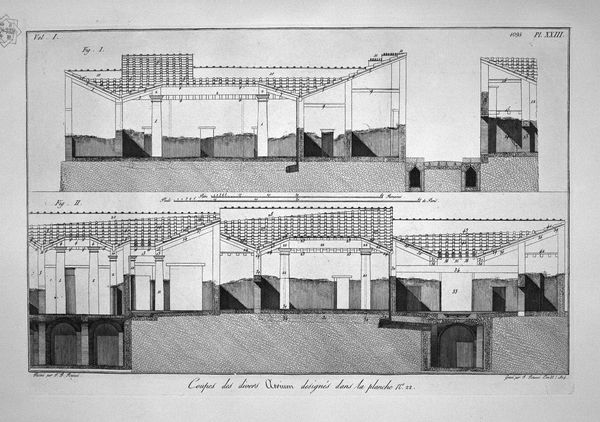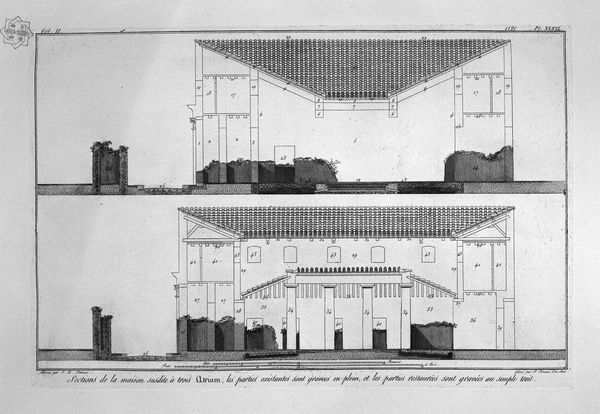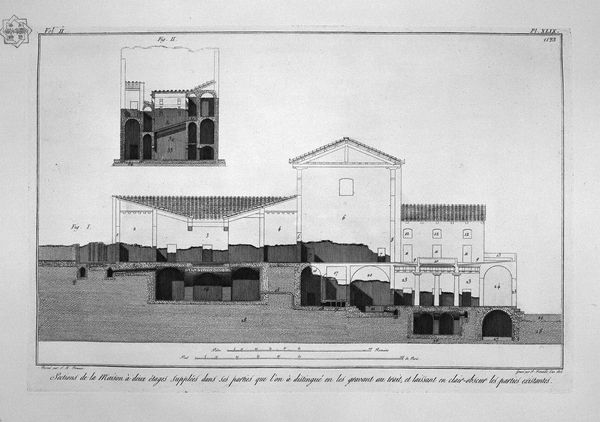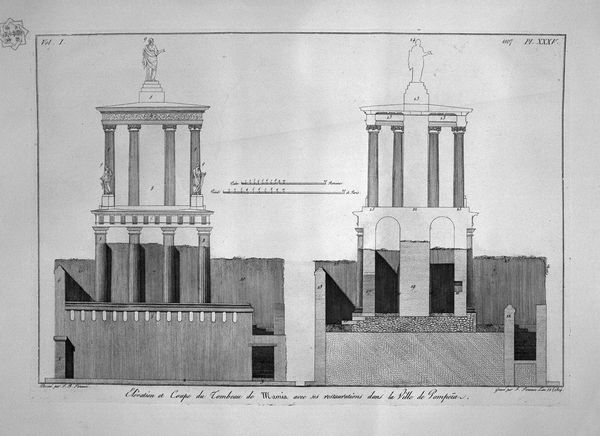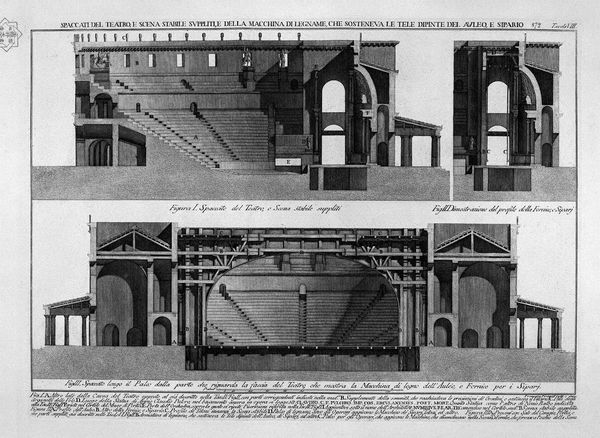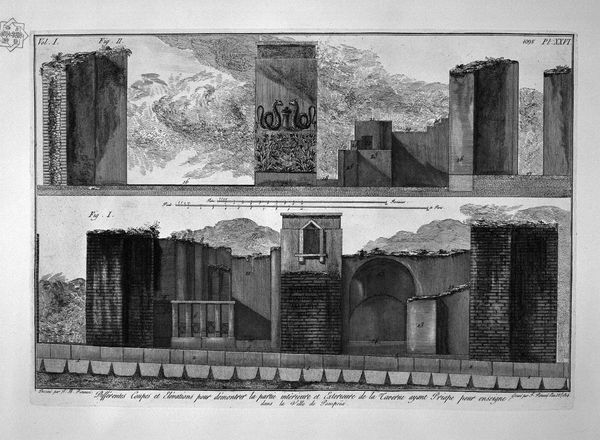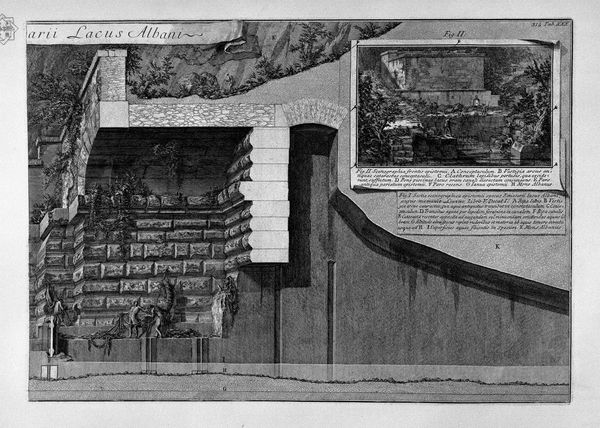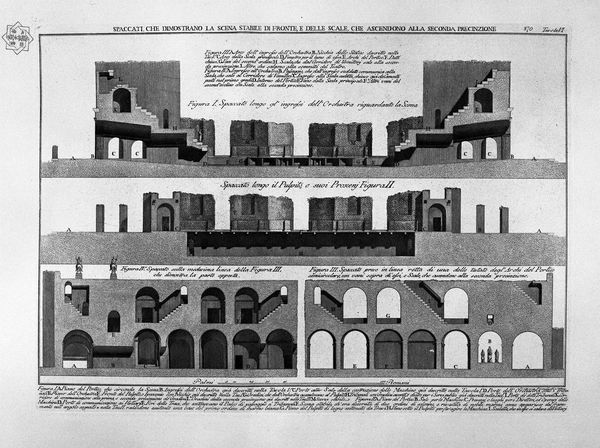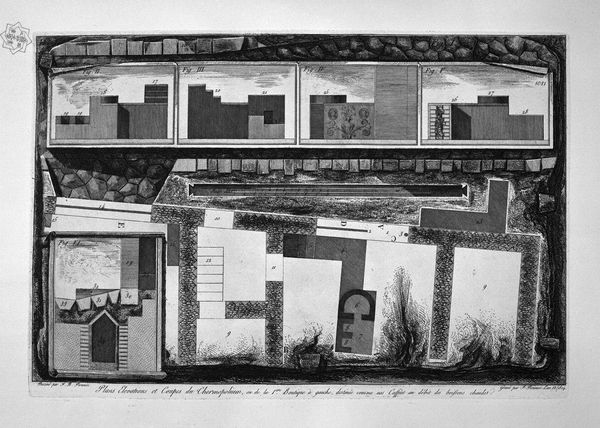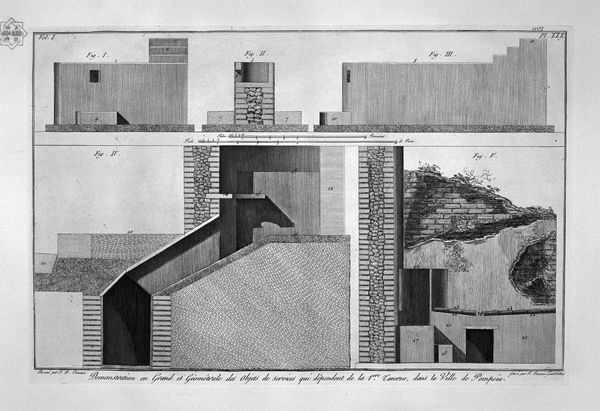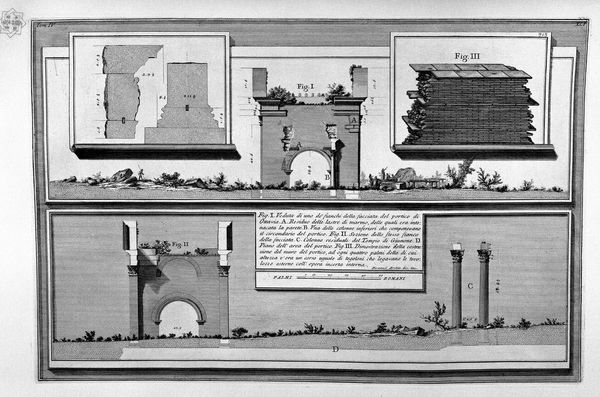
drawing, etching, ink, architecture
#
pen and ink
#
architectural sketch
#
drawing
#
etching
#
ink
#
geometric
#
line
#
cityscape
#
history-painting
#
architecture
Copyright: Public domain
Curator: Immediately, there's a sense of serenity even in ruins, a quiet strength depicted in the structure. It makes me think about the persistence of memory through the built environment. Editor: This pen and ink architectural sketch, titled "Floor Plan of the Surgeon at Pompeii," rendered with meticulous detail by Giovanni Battista Piranesi, focuses our attention on material remnants and labor. Curator: I’m captivated by the geometry, how it dissects and reveals the interior – a hidden world exposed. I almost feel like I am right there on location! The light and shadows create an ethereal effect. Editor: What's particularly striking about this work is Piranesi’s interest not merely in the artistry but in the material reality of construction itself: the very means through which those dwellings came to be and endured. We can consider Piranesi’s labor too: the ink, the paper, the printing press involved in making and disseminating such works. Curator: Absolutely. Looking at the etching, it seems as though it captures more than just the plan; there's a tactile quality; you can almost feel the textures and history embedded in the architectural lines, its penmanship feels alive somehow. It sparks a narrative of people, craft, and resilience. Editor: I appreciate the intersection of history-painting, cityscape thematics, and pure geometry in the plan. Piranesi gives consideration to both high art and "craft" by showcasing a floor plan, which normally might just be a document, into something almost dreamlike. Curator: It evokes contemplation on time, doesn't it? We're peeking into lives tragically interrupted, yet through art, the inhabitants achieve an echo into modern days. The skill of the craftsmanship preserved on the walls comes alive with imagination. Editor: Indeed, it encourages a reflection on the labor, social context, and material conditions of both Pompeii's inhabitants and of Piranesi himself as the interpreter. Curator: So true. This voyage through Piranesi's sketch makes one question the boundaries of time, reality, and artistic impression; each a palimpsest, interwoven, and enriching the next, and its a very inspiring consideration to close with. Editor: Thank you. And thinking on all we have said, our encounter serves as a good reminder that art’s beauty always exists alongside complex socio-economic forces that shape both its creation and lasting significance.
Comments
No comments
Be the first to comment and join the conversation on the ultimate creative platform.
